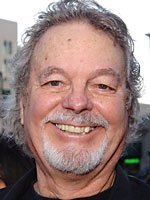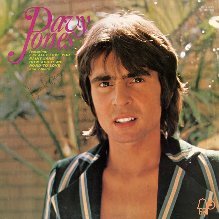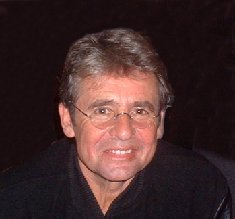Early years and development
In 1779, Johann Friedrich Oberlin and Louise Scheppler founded in Strasbourg an early establishment for caring for and educating preschool children whose parents were absent during the day. At about the same time, in 1780, similar infant establishments were created in Bavaria. In 1802, Princess Pauline zur Lippe established a preschool center in Detmold, the capital of the then principality of Lippe, Germany (now in the State of North Rhine-Westphalia).
In 1816, Robert Owen, a philosopher and pedagogue, opened the first British and probably globally the first infants school in New Lanark, Scotland. In conjunction with his venture for cooperative mills Owen wanted the children to be given a good moral education so that they would be fit for work. His system was successful in producing obedient children with basic literacy and numeracy.
Samuel Wilderspin opened his first infant school in London in 1819, and went on to establish hundreds more. He published many works on the subject, and his work became the model for infant schools throughout England and further afield. Play was an important part of Wilderspin's system of education. He is credited with inventing the playground. In 1823, Wilderspin published On the Importance of Educating the Infant Poor, based on the school. He began working for the Infant School Society the next year, informing others about his views. He also wrote The Infant System, for developing the physical, intellectual, and moral powers of all children from 1 to seven years of age.
Countess Theresa Brunszvik (1775–1861), who had known and been influenced by Johann Heinrich Pestalozzi, was influenced by this example to open an Angyalkert ("angel garden" in Hungarian) on May 27, 1828, in her residence in Buda, the first of eleven care centers that she founded for young children. In 1836 she established an institute for the foundation of preschool centers. The idea became popular among the nobility and the middle class and was copied throughout the Kingdom of Hungary.
Creation of the kindergarten
Friedrich Fröbel (1782–1852) opened a "play and activity" institute in 1837, in the village of Bad Blankenburg, in the principality of Schwarzburg-Rudolstadt, Thuringia, as an experimental social experience for children entering school. He renamed his institute Kindergarten (meaning garden of children)[12] on June 28, 1840, reflecting his belief that children should be nurtured and nourished "like plants in a garden". Fröbel introduced an educational environment into his school, in contrast to other earlier infant establishments, and is therefore credited with the creation of kindergartens. Around 1873, Caroline Wiseneder's method for teaching instrumental music to young children was adopted by the national kindergarten movement in Germany.
Women trained by Fröbel opened kindergartens throughout Europe and around the world. The first kindergarten in the US was founded in Watertown, Wisconsin in 1856, and was conducted in German by Margaretha Meyer-Schurz.
Elizabeth Peabody founded the first English-language kindergarten in the US in 1860. The first free kindergarten in the US was founded in 1870 by Conrad Poppenhusen, a German industrialist and philanthropist, who also established the Poppenhusen Institute. The first publicly financed kindergarten in the US was established in St. Louis in 1873 by Susan Blow.
Canada's first private kindergarten was opened by the Wesleyan Methodist Church in Charlottetown, Prince Edward Island, in 1870. By the end of the decade, they were common in large Canadian towns and cities. In 1882, The country's first public-school kindergartens were established in Berlin, Ontario (modern Kitchener) at the Central School. In 1885, the Toronto Normal School (teacher training) opened a department for kindergarten teaching.
The Australian kindergarten movement emerged in the last decade of the nineteenth century as both a philanthropic and educational endeavor. The first free kindergarten in Australia was established in 1896 in Sydney, New South Wales, by the Kindergarten Union of NSW (now KU Children's Services) led by reformer Maybanke Anderson.
American educator Elizabeth Harrison wrote extensively on the theory of early childhood education and worked to enhance educational standards for kindergarten teachers by establishing what became the National College of Education in 1886.
In the United States, kindergarten is usually part of the K–12 educational system. In most schools, children begin kindergarten at age five for one year. Forty-three of the fifty states (the exceptions being Alaska, Idaho, Minnesota, Michigan, New Hampshire, New York, and Pennsylvania) require school districts to offer a kindergarten year. Students develop skills such as numeracy, literacy, and a greater awareness of the world around them geographically, scientifically, socially, and culturally.
- 1 cup sugar
- 1/2 cup vegetable shortening
- 2 eggs
- 2 cups all-purpose flour
- 1 teaspoon ground cinnamon
- 1 teaspoon baking soda
- 1/2 teaspoon salt
- 1 1/2 cups applesauce
- 1 teaspoon vanilla extract
- 1/2 cup chopped walnuts
- Preheat oven to 350º. Coat a 9- x 13-inch baking dish with cooking spray.
- In a large bowl, cream sugar and shortening with an electric beater on low speed. Beat in the eggs, one at a time. Add flour, cinnamon, baking soda, and salt; beat until well mixed. Add applesauce and vanilla; mix well then stir in the walnuts and pour batter into prepared baking dish.
- Bake 30 to 35 minutes, or until wooden toothpick inserted in center comes out clean. Let cool.


.jpg)
.jpg)












No comments:
Post a Comment